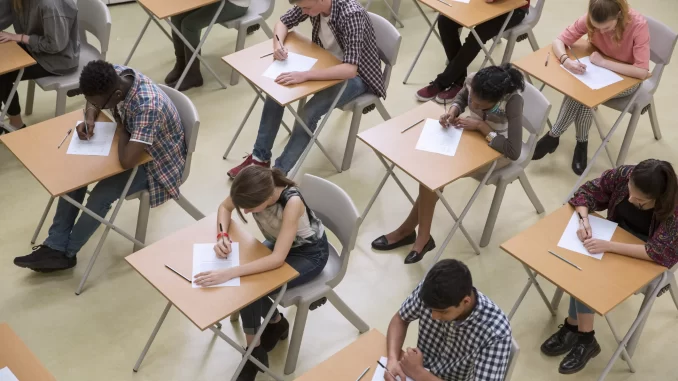
Previously Published in The Messenger
By Raheem Soto
President Donald Trump (R-FL) has made headlines once again, this time with an executive order shutting down the U.S. Department of Education. It’s a bold move, and while some applaud the push for local control, others are left wondering: What happens next? This change could hit close to home for families and educators in Suffolk County.
The Department of Education has existed as a Cabinet-level agency since 1979. Over the years, it’s played a role in setting nationwide policies and ensuring schools get federal funding—especially for special education, school lunches, and programs that help low-income students. However, critics have long argued that the department is bloated and out of touch, creating rules from Washington that don’t always make sense for local communities.
The goal behind dismantling it is simple: hand power back to the states and local school districts. On the surface, that sounds good. Suffolk County is full of diverse neighborhoods — what works in East Hampton might not work in Brentwood. Local leaders could have more freedom to make decisions that better reflect the needs of their own students.
But with that freedom comes a lot of unknowns, especially around money. According to the New York State Education Department, federal funds make up about 10% of school budgets across the state — Suffolk County is no exception. Those dollars go toward important things like special education services, after-school programs, and support for students in low-income households. Without clear answers about how those funds will be distributed if the department is dissolved, some districts could be left scrambling.
Special education is one area where the stakes are especially high. The federal government currently enforces the Individuals with Disabilities Education Act (IDEA), which ensures students with disabilities get the services and support they need. Without that federal oversight, it’s not clear how those protections will continue or who will be responsible for making sure students don’t fall through the cracks.
College students in Suffolk County may also feel the ripple effects. Right now, federal student loans are managed through the Department of Education. Under Trump’s plan, that responsibility could shift to agencies like the Small Business Administration. While it might seem like a simple shuffle on paper, any change to how student loans are handled can create confusion and delays — and for families counting on that money to cover tuition, any hiccup can be stressful.
Educators and local leaders aren’t all on the same page. Some school officials hope this could lead to more control over how schools operate and what’s taught in classrooms. After all, who knows what kids need more than teachers and principals who work with them every day? On the other hand, there’s a real fear that losing federal guidance and funding could widen the gap between wealthy school districts and those already struggling.
Take Wyandanch, for example. It’s one of the most under-resourced districts in the county. Without guaranteed federal support, districts like this could be left to fend for themselves — and students who are already at a disadvantage could fall even further behind.
Meanwhile, parents are starting to ask tough questions. Will this lead to changes in what their kids are taught? Could school programs get cut if funding dries up? And how quickly will all of this happen?
There’s also the question of school choice, which is a big part of Trump’s education agenda. More local control could mean more charter schools and voucher programs. While some parents love having more options, others worry this could pull funding from traditional public schools and create even more inequality.
At this point, the details are still murky. The executive order has been signed, but rolling out such a massive change won’t happen overnight. There are plenty of legal and logistical hurdles to clear, and Congress will likely weigh in. But for now, school districts across the country — including here in Suffolk — are left with a lot of uncertainty
New York State officials have yet to release a formal plan for how they’ll manage education without federal involvement. Governor Kathy Hochul (D) has said the state will do everything it can to protect funding for public schools, but without clear answers from Washington, it’s hard to say what that will look like.
What does this all mean for Suffolk County parents? For now, not much will change immediately. Your kids will still go to school tomorrow, and classes will go on as usual. But the coming months — and possibly years — could bring significant shifts in how schools are run, how they’re funded, and what students learn.
If you’re a parent, now is the time to get involved. Attend school board meetings, reach out to your district leaders, and stay informed. These changes could reshape public education in ways we haven’t seen in decades.
One thing is clear: this isn’t just a political headline. It’s a decision that could affect classrooms right here at home, from Riverhead to Huntington and everywhere in between. As the details come into focus, Suffolk County’s families, teachers, and students will be watching closely — and hoping that whatever happens next, kids remain the priority.

